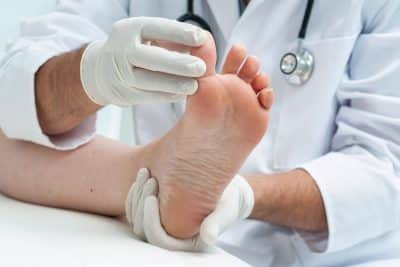Bunions
Bunions are also known as hallux valgus and are a common foot deformity that can cause pain and discomfort. We will explain common symptoms, various treatment options, and how Sunrise Podiatry can help you find relief.
Symptoms
Bunions are characterized by a bony bump that forms at the base of the big toe. The symptoms can vary from person to person, but common signs include:
- Bony Bump: The most obvious sign is the protrusion on the side of the foot, typically at the base of the big toe.
- Pain and Discomfort: Bunions can be painful, particularly when pressure is applied, such as when walking or wearing tight-fitting shoes.
- Swelling and Redness: The bunion area may become swollen and red, making it even more noticeable and uncomfortable.
- Limited Mobility: In some cases, bunions can limit the range of motion of the big toe, causing difficulties in walking and engaging in physical activities.
- Corns and Calluses: Due to the friction and pressure on the bunion, corns and calluses may develop, adding to the discomfort.
Types of Bunions
Bunions can be categorized into two primary types:
- Structural: These are the most common type and are often hereditary. They develop due to an imbalance in the alignment of the bones in the foot, particularly the joint at the base of the big toe.
- Functional: Functional bunions are typically caused by biomechanical issues, such as flat feet or overpronation. These issues lead to the same outward protrusion but may be more treatable through conservative measures.
Treatment of Bunions
The treatment of bunions depends on the severity of the condition and may include the following:
- Footwear Modifications: Wearing wide, comfortable shoes with ample room for the toes can help reduce pressure on the bunion and alleviate pain. High heels and narrow shoes should be avoided.
- Orthotic Devices: Custom-made or over-the-counter orthotic inserts can help provide support and stability to the foot, reducing pressure on the bunion and improving alignment.
- Medications: Over-the-counter pain relievers or anti-inflammatory medications can be used to manage pain and swelling associated with bunions.
- Physical Therapy: A podiatrist or physical therapist may recommend exercises and stretches to improve foot and toe flexibility, helping to reduce discomfort.
- Pads and Splints: Special pads and splints can be used to protect and support the bunion, preventing further aggravation.
- Surgical Intervention: In severe cases, where conservative treatments are ineffective or when the bunion causes significant pain and limits daily activities, surgery may be recommended. Surgical procedures aim to realign the affected bones, remove the bunion, and improve joint function.
How Sunrise Podiatry Can Help
Sunrise Podiatry, located in Broward County, Florida, is your trusted partner for expert foot care. Our experienced podiatrists are well-versed in diagnosing and treating various foot conditions, including bunions.
Sunrise Podiatry offers personalized treatment plans to address your specific needs. Our podiatrists will assess the severity of your ailment and recommend the most appropriate treatment, which may include footwear recommendations, orthotic devices, physical therapy, or, in extreme cases, surgical intervention.
By choosing Sunrise Podiatry, you gain access to a team of experienced professionals who are dedicated to helping you find relief from foot pain and discomfort. Our commitment to patient well-being and advanced treatment options sets us apart as a leading podiatry clinic.
Bunions can be both painful and unsightly, but they are treatable with the right care. Sunrise Podiatry is dedicated to providing expert foot care, with a team of experienced podiatrists and a range of treatment options to address your specific needs. Don’t let bunions impact your quality of life; contact Sunrise Podiatry to start your journey towards healthier, happier feet.


